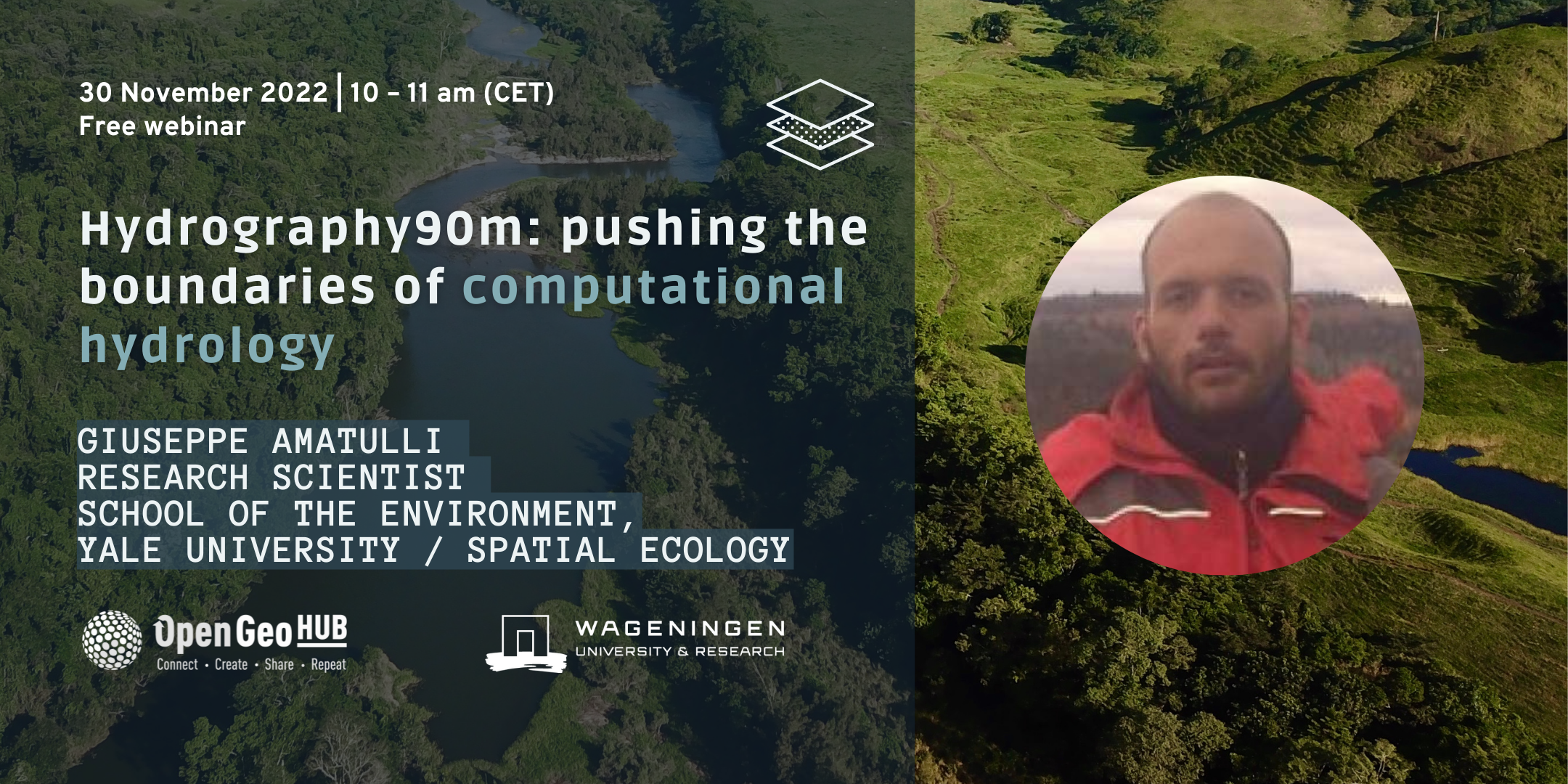
- This event has passed.
Webinar: Hydrography90m, pushing the boundaries of computational hydrology

An open webinar on hydrology by the guest speaker Giuseppe Amatulli from Yale University.
Join this free webinar & contribute to the open-source community!
REGISTER & LIVESTREAM HERE!
Hydrography90m: pushing the boundaries of computational hydrology
Streams and rivers drive several processes in hydrology, geomorphology, geography and ecology. A global starized hydrographic network that accurately delineates streams and rivers, along with their topographic and topological properties, is needed for worldwide environmental applications. Using the MERIT Hydro Digital Elevation Model at 90m and by employing a suite of GRASS GIS hydrological modules, we calculated the range-wide upstream flow accumulation and flow direction to delineate a total of 1.6 million drainage basins and extracted globally a total of 726 million unique stream segments with their corresponding sub-catchments. Besides, we computed stream topographic variables comprising stream slope, gradient, length, and curvature attributes as well as stream topological variables to allow for network routing and various stream order classifications. The validation shows that the newly developed Hydrography90m has the highest spatial precision and contains more headwater stream channels compared to three other global hydrographic datasets.
More information at https://doi.org/10.5194/essd-14-4525-2022 & https://hydrography.org/
About Giuseppe Amatulli
Dr Amatulli is a passionate forester and spatial modeller by training (M.Sc. & PhD in GeoScience and Forestry) and a computer scientist by trade. His research activity is mainly dedicated to spatial modelling, GIS and remote sensing with special emphasis on tspecies distribution model, areal distribution and potential shift under climate change conditions, wildland fire occurrence and pattern recognition, and wildfire risk assessment based on human and bio-physical parameters.
Ultimately, he is dealing with geomorphology and hydrography analysis to derive high-accuracy flow estimation. He is daily dealing with high-resolution data in the context of complex and modern modelling techniques using stand-alone implementation processes under Linux environment. He uses open-source programming language and software (GRASS, R, PYTHON, GNUPLOT, AWK, BASH, QGIS, OPENEV, CDO) to accomplish large data processing in cluster processing keeping always in mind the ecological and geophysical aspects of the research study. He supports the use of open-source for geocomputation and machine learning modelling giving dedicated courses using (and maintaining) the www.spatial-ecology.net web page.
